This set of Mechanical Metallurgy Multiple Choice Questions & Answers (MCQs) focuses on “Tension Test – Effect of Strain Rate on Flow Properties – 1”.
1. For an extremely ductile metal, the true fracture strain calculated from the reduction in the area of the specimen and the elongation in the length of the sample will have different values.
a) True
b) False
View Answer
Explanation: For an extremely ductile material, the elongation of length will be non-uniform near the necking area, which gives false value of true fracture strain. So generally the reduction in area is considered for the calculation.
2. In which of the following sample, the diffuse necking will be observed?
a)

b)

c)
![]()
d)
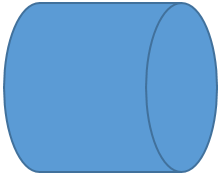
View Answer
Explanation: The diffuse necking is generally observed in the rectangular sample where the thickness of the sample is much smaller than the width of the sample.
3. In which of the following sample, the diffuse necking will be observed?
a)

b)

c)
![]()
d)

View Answer
Explanation: The localized necking is phenomena followed by diffuse necking. So it is observed in the rectangular sample where the thickness of the sample is much smaller than the width of the sample.
4. For the given specimen the necking will begin when the true strain will be equal to __________

a) n
b) 2n
c) 3n
d) 4n
View Answer
Explanation: For the cylindrical specimen, the necking begins when the maximum tensile strength of the material is achieved. This is followed by the condition when true strain will be equal to strain hardening exponent.
-> ε=n
where n is strain hardening exponent.
5. For the given specimen the necking will begin when the true strain is equal to __________

a) n
b) 2n
c) 3n
d) 4n
View Answer
Explanation: For a rectangular plate where the thickness of the slab is much smaller than width, the necking begins when the true strain becomes equal to twice the strain hardening exponent.
-> ε=2n
6. The following tensile test specimen is tested for loading in uniaxial tension as shown in figure A. The local extension if plotted along the length of the sample the curve will look like figure B.
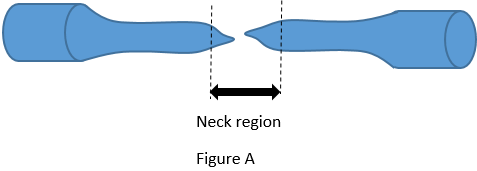
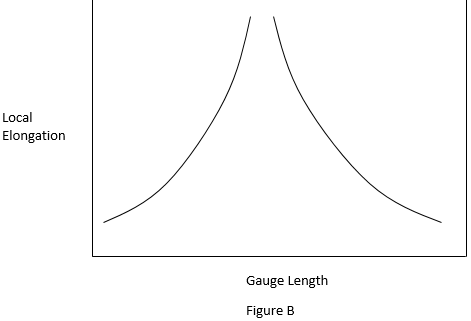
a) True
b) False
View Answer
Explanation: The Necking region goes under elongation much higher compared to the rest of the sample. So, if local elongation in the necking area will be highest, and away from the necking region, it will gradually decrease.
7. The following tensile test specimen is tested for loading in uniaxial tension as shown in figure below. How will the curve look like if the sample is still in the elastic limit (the local extension is plotted along the length of the specimen)?

a)
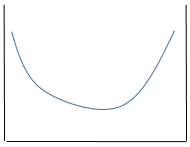
b)
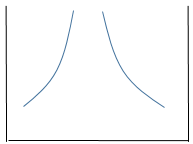
c)
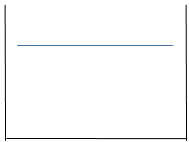
d)
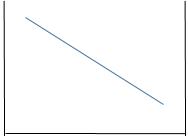
View Answer
Explanation: When the sample is in the elastic region, the extension along the length will be uniform, so there is no extra local elongation or vice versa.
8. To compare the elongation data from different sized specimen, the geometrical shape factor is taken into consideration. For a cylindrical specimen, the geometrical shape factor will ____________ (where L is the length, D is the diameter).
a) L/D
b) L2/D
c) L/D2
d) √L/D
View Answer
Explanation: The L/D ratio is used to get consistency in the result for a sample of different size. Suppose a sample is of length 50 cm and diameter is 25 cm, it will have the same result with an example having 100cm length and 50 cm diameter.
9. To compared the elongation data from different sized specimen, the geometrical shape factor is taken into consideration. For a sheet specimen, the geometrical shape factor will ____________ (where L is the length, A is the area of cross-section).
a) L/A
b) L/A2
c) L/√A
d) L2/A
View Answer
Explanation: The L/√A ratio should be constant to get consistency in the result for the sheet type sample of different dimensions.
Sanfoundry Global Education & Learning Series – Mechanical Metallurgy.
To practice all areas of Mechanical Metallurgy, here is complete set of 1000+ Multiple Choice Questions and Answers.
If you find a mistake in question / option / answer, kindly take a screenshot and email to [email protected]
- Practice Metallurgical Engineering MCQs
- Apply for Metallurgical Engineering Internship
- Check Mechanical Metallurgy Books
- Check Metallurgical Engineering Books
